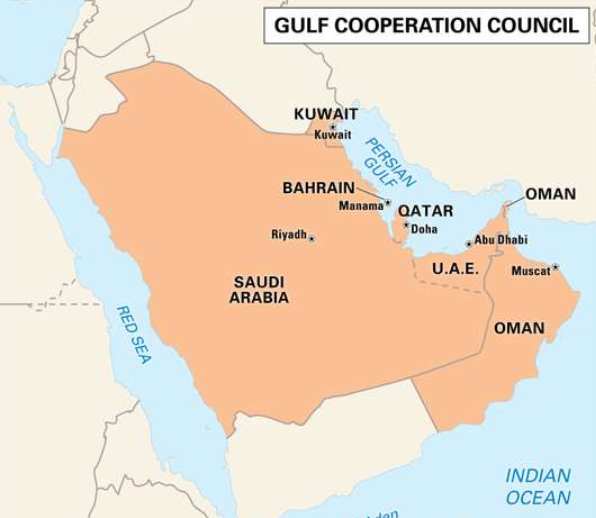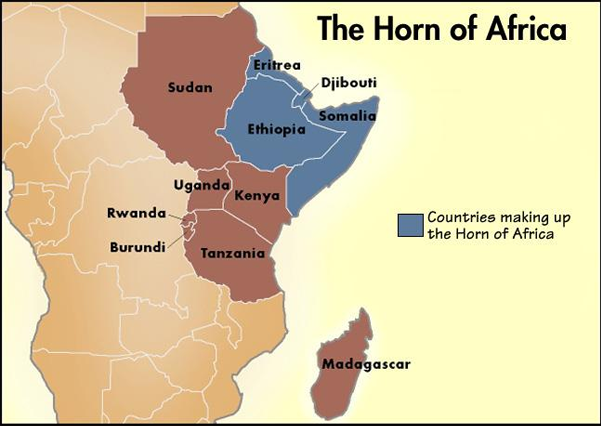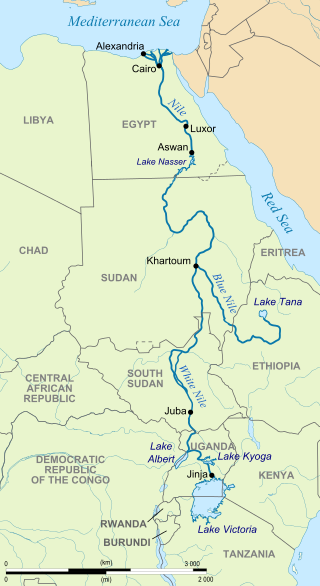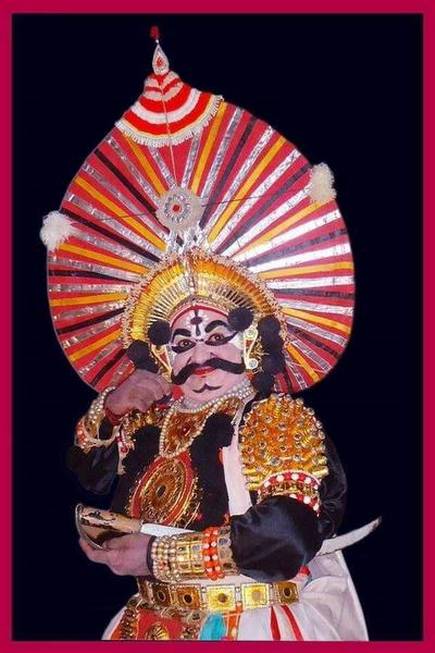Judicial Review
Why in News
Recently, the Supreme Court (SC) refused to treat the Central Vista project as a unique one requiring greater or heightened judicial review.
- The SC said the government was “entitled to commit errors or achieve successes” in policy matters without the court’s interference as long as it follows constitutional principles.
- The Central Vista project of New Delhi includes Rashtrapati Bhawan, Parliament House, North and South Block, India Gate, National Archives among others.
- The Indian Constitution adopted the Judicial Review on lines of the American Constitution.
Key Points
- Judicial Review:
- It is a type of court proceeding in which a judge reviews the lawfulness of a decision or action made by a public body.
- In other words, judicial reviews are a challenge to the way in which a decision has been made, rather than the rights and wrongs of the conclusion reached.
- Concepts of Law:
- Procedure Established by Law: It means that a law enacted by the legislature or the concerned body is valid only if the correct procedure has been followed to the letter.
- Due Process of Law: It is a doctrine that not only checks if there is a law to deprive the life and personal liberty of a person but also ensures that the law is made fair and just.
- India follows Procedure Established by Law.
- It is the power exerted by the courts of a country to examine the actions of the legislatures, executive and administrative arms of government and to ensure that such actions conform to the provisions of the nation’s Constitution.
- Judicial review has two important functions, like, of legitimizing government action and the protection of constitution against any undue encroachment by the government.
- Judicial review is considered a basic structure of the constitution (Indira Gandhi vs Raj Narain Case 1975).
- Judicial review is also called the interpretational and observer roles of the Indian judiciary.
- Suo Moto cases and the Public Interest Litigation (PIL), with the discontinuation of the principle of Locus Standi, have allowed the judiciary to intervene in many public issues, even when there is no complaint from the aggrieved party.
- It is a type of court proceeding in which a judge reviews the lawfulness of a decision or action made by a public body.
- Types of Judicial Review:
- Reviews of Legislative Actions:
- This review implies the power to ensure that laws passed by the legislature are in compliance with the provisions of the Constitution.
- Review of Administrative Actions:
- This is a tool for enforcing constitutional discipline over administrative agencies while exercising their powers.
- Review of Judicial Decisions:
- This review is used to correct or make any change in previous decisions by the judiciary itself.
- Reviews of Legislative Actions:
- Importance of Judicial Review:
- It is essential for maintaining the supremacy of the Constitution.
- It is essential for checking the possible misuse of power by the legislature and executive.
- It protects the rights of the people.
- It maintains the federal balance.
- It is essential for securing the independence of the judiciary.
- It prevents tyranny of executives.
- Problems with Judicial Review:
- It limits the functioning of the government.
- It violates the limit of power set to be exercised by the constitution when it overrides any existing law.
- In India, a separation of functions rather than of powers is followed.
- The concept of separation of powers is not adhered to strictly. However, a system of checks and balances have been put in place in such a manner that the judiciary has the power to strike down any unconstitutional laws passed by the legislature.
- The judicial opinions of the judges once taken for any case becomes the standard for ruling other cases.
- Judicial review can harm the public at large as the judgment may be influenced by personal or selfish motives.
- Repeated interventions of courts can diminish the faith of the people in the integrity, quality, and efficiency of the government.
Constitutional Provisions for Judicial Review
- There is no direct and express provision in the constitution empowering the courts to invalidate laws, but the constitution has imposed definite limitations upon each of the organs, the transgression of which would make the law void.
- The court is entrusted with the task of deciding whether any of the constitutional limitations has been transgressed or not.
- Some provisions in the constitution supporting the process of judicial review are:
- Article 372 (1) establishes the judicial review of the pre-constitution legislation.
- Article 13 declares that any law which contravenes any of the provisions of the part of Fundamental Rights shall be void.
- Articles 32 and 226 entrusts the roles of the protector and guarantor of fundamental rights to the Supreme and High Courts.
- Article 251 and 254 states that in case of inconsistency between union and state laws, the state law shall be void.
- Article 246 (3) ensures the state legislature’s exclusive powers on matters pertaining to the State List.
- Article 245 states that the powers of both Parliament and State legislatures are subject to the provisions of the constitution.
- Articles 131-136 entrusts the court with the power to adjudicate disputes between individuals, between individuals and the state, between the states and the union; but the court may be required to interpret the provisions of the constitution and the interpretation given by the Supreme Court becomes the law honoured by all courts of the land.
- Article 137 gives a special power to the SC to review any judgment pronounced or order made by it. An order passed in a criminal case can be reviewed and set aside only if there are errors apparent on the record.
Way Forward
- With the power of judicial review, the courts act as a custodian of the fundamental rights.
- With the growing functions of the modern state, judicial intervention in the process of making administrative decisions and executing them has also increased.
- When the judiciary surpasses the line of the powers set for it in the name of judicial activism, it could be rightly said that the judiciary then begins to invalidate the concept of separation of powers set out in the Constitution.
- Making laws is the function and duty of the legislature, to fill the gap of laws and to implement them in a proper manner is responsibility of the executive. So that the only work remaining for the judiciary is interpretations. Only a fine equilibrium between these government bodies can sustain the constitutional values.
Solidarity and Stability Deal: Gulf Countries
Why in News
Recently, Gulf states signed a ‘solidarity and stability’ deal at the 41st Gulf Cooperation Council (GCC) summit held in Al Ula, Saudi Arabia.
Key Points
- Background:
- Sanctions on Qatar:
- In June 2017, Saudi Arabia and its allies, the United Arab Emirates (UAE), Bahrain and Egypt severed ties with Qatar and imposed a naval, air and land blockade on the country.
- Reasons:
- Qatar was charged to be too close to Iran and backed radical Islamist groups.
- The country was alleged to support and fund terror through its support of Iran and Muslim Brotherhood (a Sunni Islamist political group outlawed by both Saudi Arabia and the UAE).
- Sanctions on Qatar:
- Solidarity and Stability Deal:
- Members of the GCC signed a deal in AlUla, Saudi Arabia to remove all the sanctions over Qatar and re-open their land, sea and air borders to Qatar.
- Bahrain, Kuwait, Oman, Qatar, Saudi Arabia and UAE are the members of GCC.
- Reason:
- To unite efforts to promote the Gulf region and to confront challenges that surround them, especially the threats posed by the Iranian regime’s nuclear and ballistic missile programme and its plans for sabotage and destruction.
- Members of the GCC signed a deal in AlUla, Saudi Arabia to remove all the sanctions over Qatar and re-open their land, sea and air borders to Qatar.
Gulf Cooperation Council
- GCC is a political, economic, social, and regional organisation which was established by an agreement concluded in 1981 among Bahrain, Kuwait, Oman, Qatar, Saudi Arabia and UAE in view of their special relations, geographic proximity, similar political systems based on Islamic beliefs, joint destiny and common objectives.
- The structure of the GCC consists of the Supreme Council (the highest authority), the Ministerial Council and the Secretariat General. The Secretariat is located in Riyadh, Saudi Arabia.
India’s Relation with Gulf Region
- India and GCC:
- The economic and political relationship of India with the GCC has improved in recent years.
- The friendly relation has been reflected in the bilateral trade of around USD 121 billion and remittances of USD 49 billion from a workforce of over nine million.
- GCC suppliers account for around 34% of India’s crude imports.
- India and Iran:
- India has always shared a friendly relationship with Iran. But the India-Iran relation faces one of the most complex phases at all times due to the USA’s pressure which has politico-economic impacts.
- In May 2018, the USA abandoned the nuclear deal (Joint Comprehensive Plan of Action) and reinstated economic sanctions against Iran.
- India and Qatar:
- Recently, India’s External Affairs Minister met the top leaders of Qatar and discussed strengthening the economic and security cooperation between the two countries.
- India shares a friendly relation with Qatar and even at the time of sanctions on Qatar, India maintained a cordial relation with the oil rich nation.
- India's Overall Role in the Region:
- India has avoided involvement in local or regional disputes in the region, since Indian interests do not entail power projection but necessitate peace and regional stability.
- The Gulf is among India’s top trading partners. The deepening energy interdependence is marked by growing volumes of energy imports into India. There is also the prospect of substantive investments from the Gulf into the Indian hydrocarbon sector.
- The number of Indian migrant workers in the region stands at more than 7 million.
- The expansion of the political engagement has been matched by the growing security cooperation, especially on counter-terrorism.
- India and its Gulf partners are also taking tentative steps towards defence cooperation.
- For example participation of Saudi Arabia, Oman, Kuwait, and others in India’s mega multilateral Milan Exercise.
Way Forward
- The Gulf region has historical, political, economic, strategic and cultural significance for India. India-GCC Free Trade Agreement (FTA) can provide a boost to the relations.
- It has been assessed that Saudi Arabia is a fading power whereas UAE, Qatar and Iran are emerging as the new regional leaders. Oman and Iraq will have to struggle to retain their sovereign identities.
- Thus, Indian interests would be best served if the stability in the region is ensured through cooperative security since the alternative, of competitive security options, cannot ensure durable peace.
Conflict Over Nile
Why in News
Ethiopia, Sudan and Egypt have recently agreed to resume negotiations to resolve their decade-long complex dispute over the Grand Renaissance Dam hydropower project in the Horn of Africa.
- Horn of Africa is the easternmost extension of African land and includes the region that is home to the countries of Djibouti, Eritrea, Ethiopia, and Somalia, whose cultures have been linked throughout their long history.
- The Grand Renaissance Dam is being constructed by Ethiopia on the river Nile.
Key Points
- Conflict:
- The Nile, Africa’s longest river, has been at the center of a decade-long complex dispute involving several countries that are dependent on the river’s waters.
- Grand Renaissance Dam:
- This 145-meter-tall (475-foot-tall) hydropower project, started by Ethiopia is the cause of conflict.
- Given the dam’s location on the Blue Nile tributary, it would allow Ethiopia to gain control of the flow of the river’s waters.
- Blue Nile is a tributary of the Nile river and it carries about two-thirds of the river's water volume and most of the silt.
- At the forefront of this dispute are Ethiopia, Egypt and Sudan.
- Dam’s Importance for Ethiopia:
- Ethiopia believes this dam will generate approximately 6,000 megawatts of electricity which will support its industrial growth.
- It can also export surplus electricity to neighbouring regions to generate revenue.
- Neighbouring countries like Kenya, Sudan, Eritrea and South Sudan also suffer from electricity shortages and they can also benefit from the hydropower project if Ethiopia decides to sell electricity to them.
- Egypt’s Concern:
- Egypt lies downstream and is concerned that Ethiopia’s control over the water could result in lower water levels within its own borders.
- Egypt depends on the Nile for approximately 97% of its drinking water and irrigation supplies.
- The dam would jeopardise food and water security and livelihoods of ordinary Egyptian citizens.
- Sudan’s Stand:
- Sudan too is concerned that if Ethiopia were to gain control over the river, it would affect the water levels Sudan receives.
- Sudan is likely to benefit from the power generated by the dam.
- The regulated flow of the river will save Sudan from serious flooding in August and September. Thus it has proposed joint management of the dam.
- Current Situation:
- The latest round of talks between Ethiopia, Sudan and Egypt occurred with South Africa observing the proceedings in its role as the current head of the African Union’s rotating council, in addition to other international observers.
- Despite previous talks, the point of contention hasn’t changed.
Nile River
- The River Nile is in Africa. It originates in Burundi, south of the equator, and flows northward through northeastern Africa, eventually flowing through Egypt and finally draining into the Mediterranean Sea.
- Source:
- The source of the Nile is sometimes considered to be Lake Victoria, but the lake itself has feeder rivers of considerable size like the Kagera River.
- The Nile River is considered as one of the longest rivers in the world.
- The Nile has a length of about 6,695 kilometers (4,160 miles).
- The Nile basin is huge and includes parts of Tanzania, Burundi, Rwanda, Congo (Kinshasa), Kenya.
- The Nile River forms an arcuate delta as it empties into the Mediterranean Sea. Deltas with triangular or fan-shape are called arcuate (arc-like) deltas.
- The Nile is formed by three principal streams: the Blue Nile, the Atbara, and the White Nile.
Way Forward
- To solve the conflict peacefully, mediation and facilitation by the neighbouring countries and the international bodies are necessary.
- In case, the attempt to resolve the conflict does not work out by facilitating negotiations between the conflict parties, then a compensation method can be adopted which would need the countries to compensate each others’ losses.
- All countries involved in the issue need to peacefully resolve the issue so that they can reap the advantages of the dam and their peace and security is restored again.
Asian Waterbird Census
Why in News
The two-day Asian Waterbird Census-2020 has commenced in Andhra Pradesh under the aegis of experts from the Bombay Natural History Society (BNHS).
Key Points
- About:
- Every January, thousands of volunteers across Asia and Australasia visit wetlands in their country and count waterbirds. This citizen science programme is the Asian Waterbird Census (AWC).
- The AWC is an integral part of the global waterbird monitoring programme, the International Waterbird Census (IWC), coordinated by Wetlands International.
- The IWC is a monitoring programme operating in 143 countries to collect information on the numbers of waterbirds at wetland sites.
- Wetlands International is a global not-for-profit organisation dedicated to the conservation and restoration of wetlands.
- It runs in parallel with other regional programmes of the International Waterbird Census in Africa, Europe, West Asia, the Neotropics and the Caribbean.
- Scope:
- It was initiated in 1987 in the Indian subcontinent and has grown rapidly to cover major regions of Asia, from Afghanistan eastwards to Japan, Southeast Asia and Australasia.
- The census covers the entire East Asian - Australasian Flyway and a large part of the Central Asian Flyway.
- The East Asia - Australasia Flyway extends from Arctic Russia and North America to the southern limits of Australia and New Zealand. It encompasses large parts of East Asia, all of Southeast Asia and includes eastern India and the Andaman and Nicobar Islands.
- The Central Asian Flyway (CAF) covers a large continental area of Eurasia between the Arctic and Indian Oceans and the associated island chains.
- Benefits:
- The count not only gives an idea of the birds at the wetland but also the health of the wetland - a good number of waterbirds indicates that it has adequate feeding, resting, roosting and foraging spots.
- The information collected helps to promote the designation and management of internationally important sites such as nationally protected areas, Ramsar Sites, East Asian - Australasian Flyway Network Sites, Important Bird and Biodiversity Areas (IBAs).
- It also helps in implementation of the Convention on Migratory Species (CMS) and the Convention on Biological Diversity‘s (CBD).
- AWC in India:
- The AWC is jointly coordinated by the Bombay Natural History Society (BNHS) and Wetlands International.
- BNHS is a pan-India wildlife research organization, which has been promoting the cause of nature conservation since 1883.
- A reference list of internationally important AWC sites and wetland IBAs in India has been prepared.
- India has 42 Ramsar sites, the latest one included is Tso Kar Wetland Complex of Ladakh.
- BirdLife's Important Bird and Biodiversity Area (IBA) Programme identifies, monitors and protects a global network of priority sites for the conservation of birds and other wildlife. India has more than 450 sites.
- The 13th Meeting of the Conference of the Parties to the Convention on the Conservation of Migratory Species of Wild Animals (CMS COP13) concluded in Gandhinagar, Gujarat in February 2020.
- Ten new species were added to CMS Appendices at COP13. Seven species were added to Appendix I (provides the strictest protection) including the Asian Elephant, Jaguar, Great Indian Bustard, Bengal Florican, etc.
- India submitted its Sixth National Report (NR6) to the Convention on Biological Diversity (CBD) in December 2018.
- The AWC is jointly coordinated by the Bombay Natural History Society (BNHS) and Wetlands International.
Yakshagana
Why in News
Recently a Yakshagana artiste died while performing on stage.
Key Points
- Yakshagana is a traditional theatre form of Karnataka.
- It is a temple art form that depicts mythological stories and Puranas.
- It is performed with massive headgears, elaborate facial make-up and vibrant costumes and ornaments.
- Usually recited in Kannada, it is also performed in Malayalam as well as Tulu (the dialect of south Karnataka).
Note:
- Tulu is a Dravidian language whose speakers are concentrated in the region of Tulu Nadu, which comprises the districts of Dakshina Kannada and Udupi in Karnataka and the northern part of Kasaragod district of Kerala.
- The oldest available inscriptions in Tulu are from the period between 14th to 15th century AD.
- It is performed with percussion instruments like chenda, maddalam, jagatta or chengila (cymbals) and chakratala or elathalam (small cymbals).
- The most popular episodes are from the Mahabharata i.e. Draupadi swayamvar, Subhadra vivah, etc. and from Ramayana i.e. Rajyabhishek, Lav-Kush yuddh, etc.
| Theatre Forms | State | Theme |
| Nautanki | Uttar Pradesh | Often draws on romantic Persian literature for its themes. |
| Tamasha | Maharashtra | Evolved from the folk forms such as gondhal, jagran and kirtan. |
| Bhavai | Gujarat | Subtle social criticism laced with humour. |
| Jatra | West Bengal/Orissa and eastern Bihar | Originated in Bengal as a result of the Bhakti movement. Initially known as Krishna jatra due to Chaitanya’s (spiritual founder of Gaudiya Vaishnavism) influence. |
| Koodiyattam | Kerala | Oldest traditional theatre forms of India, it follows the performative principles of the ancient tradition of Sanskrit theatre. In 2001, Koodiyattam was officially recognized by UNESCO as a Masterpiece of the Oral and Intangible Heritage of Humanity. |
|
Mudiyettu |
Kerala | Traditional ritual theatre and folk dance drama from Kerala that enacts the mythological tale of a battle between the goddess Kali and the demon Darika. The ritual is a part of the bhagavathi or bhadrakali cult. |
| Bhaona | Assam | A creation of Srimanta Sankardeva (an Assamese saint-scholar), these plays were written in Brajavali, a unique Assamese-Maithili mixed language, and are primarily centered on Hindu deity, Krishna. |
| Maach | Madhya Pradesh | It is a sung folk theatre that has a semi sacred character, blending religious and secular themes. |
| Bhand Pather | Kashmir | Satire, wit and parody are commonly used in this folk drama that incorporates local mythological legends and contemporary social commentary. |
Toycathon 2021
Why in News
Recently, the government has launched a virtual toy hackathon ‘Toycathon 2021’.
Key Points
- Initiative of:
- The Ministry of Education, Ministry of Women and Child Development, Ministry of Textile, Ministry of Commerce and Industries, Ministry of Micro, Small and Medium Enterprises, Ministry of Information and Broadcasting and All India Council for Technical Education.
- Aim:
- To conceptualize innovative toys based on the Indian value system which will inculcate the positive behaviour and good value among the children.
- To promote India as a global toy manufacturing hub (Atmanirbhar Abhiyan).
- Features:
- Based on: Indian culture and ethos, local folklore and heroes, and Indian value systems.
- Themes: Nine themes, including fitness and sport and rediscovering traditional Indian toys.
- Participants: Students, teachers, start-ups and toy experts.
- Prize: Participants can get prizes upto Rs. 50 lakhs.
- Significance:
- Toys can be an excellent medium to further the spirit of ‘Ek Bharat, Shreshtha Bharat’
- “Ek Bharat Shreshtha Bharat” was announced by the Prime Minister in 2015 to enhance the understanding and bonding between the States, thereby strengthening the unity and integrity of India.
- It will help in promoting the use of educational toys in line with the National Education Policy (NEP) 2020.
- It will create an ecosystem for the domestic Toy industry and the local manufacturers, tapping the untapped resources and utilizing their potential.
- It will help in reducing toy imports.
- Though the toy market in India is worth USD 1 billion, 80% toys are imported.
- Toys can be an excellent medium to further the spirit of ‘Ek Bharat, Shreshtha Bharat’
Freight Business Development Portal: Railways
Why in News
The Ministry of Railways has launched an exclusive portal to promote and develop the railways’ freight business - Freight Business Development Portal.
Key Points
- Background:
- With passenger train services suspended due to the coronavirus crisis, the railways is banking heavily on freight revenues for its earnings.
- The Dedicated Freight Corridor Corporation of India Limited (DFCCIL), a government enterprise under the administrative control of the Ministry of Railways, is carrying out the construction of 3,342-km eastern and western freight corridors for exclusive movement of goods trains.
- About the Portal:
- This first of its kind dedicated Freight portal will ensure that all operations stay customer centric, reduce the costs for logistics providers, provide online tracking facility for suppliers and also simplify the process of goods transportation.
- The aim is to replace physical processes with online ones to minimize the need of human to human interaction.
- The portal has a focus on ease of doing business and to bring more transparency and to provide professional support.
- The Railways has also invited aggregators, truckers, warehouse owners and labour providers to offer their services to its more than 9,000 freight customers at over 4,000 freight terminals.




